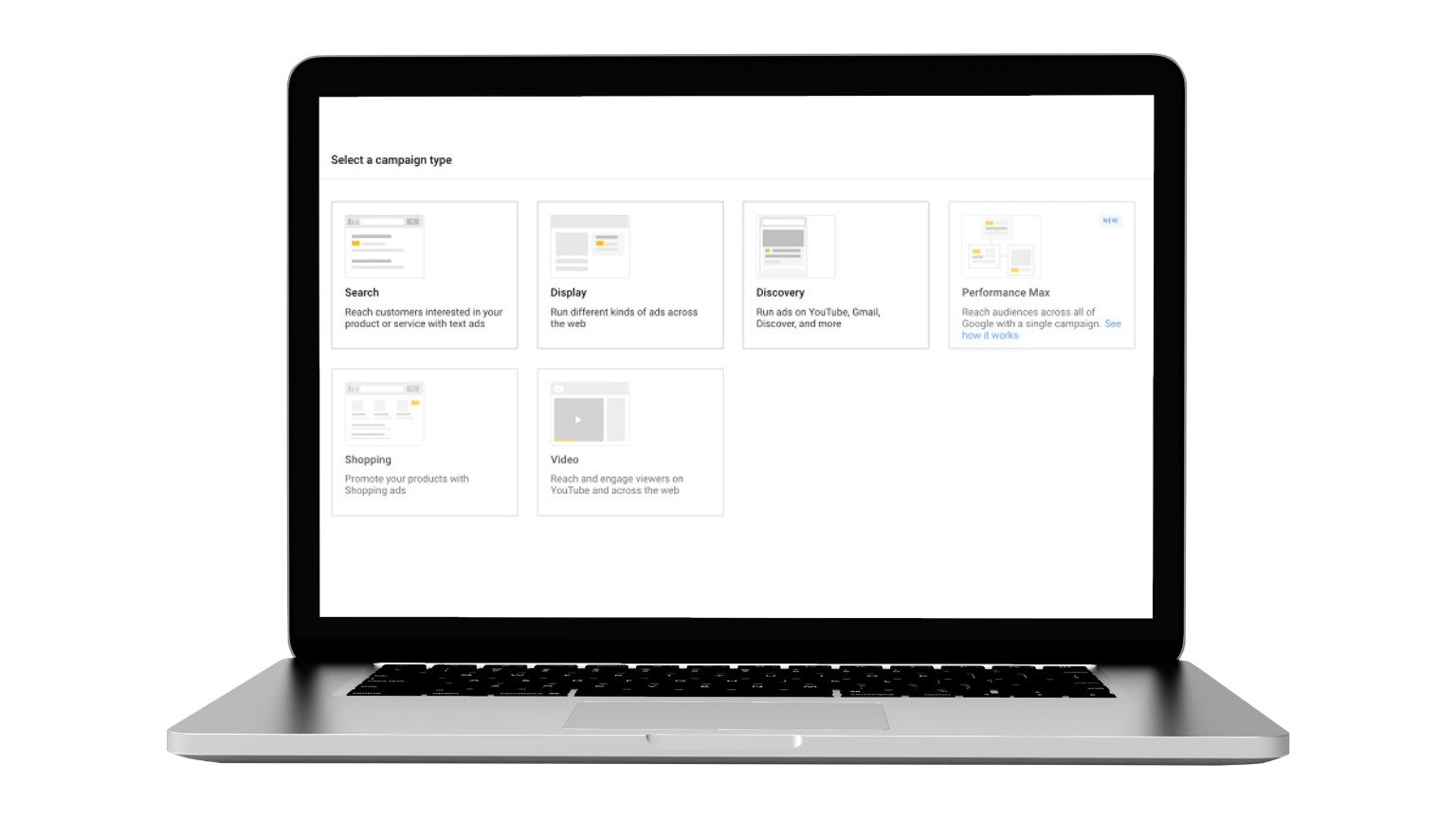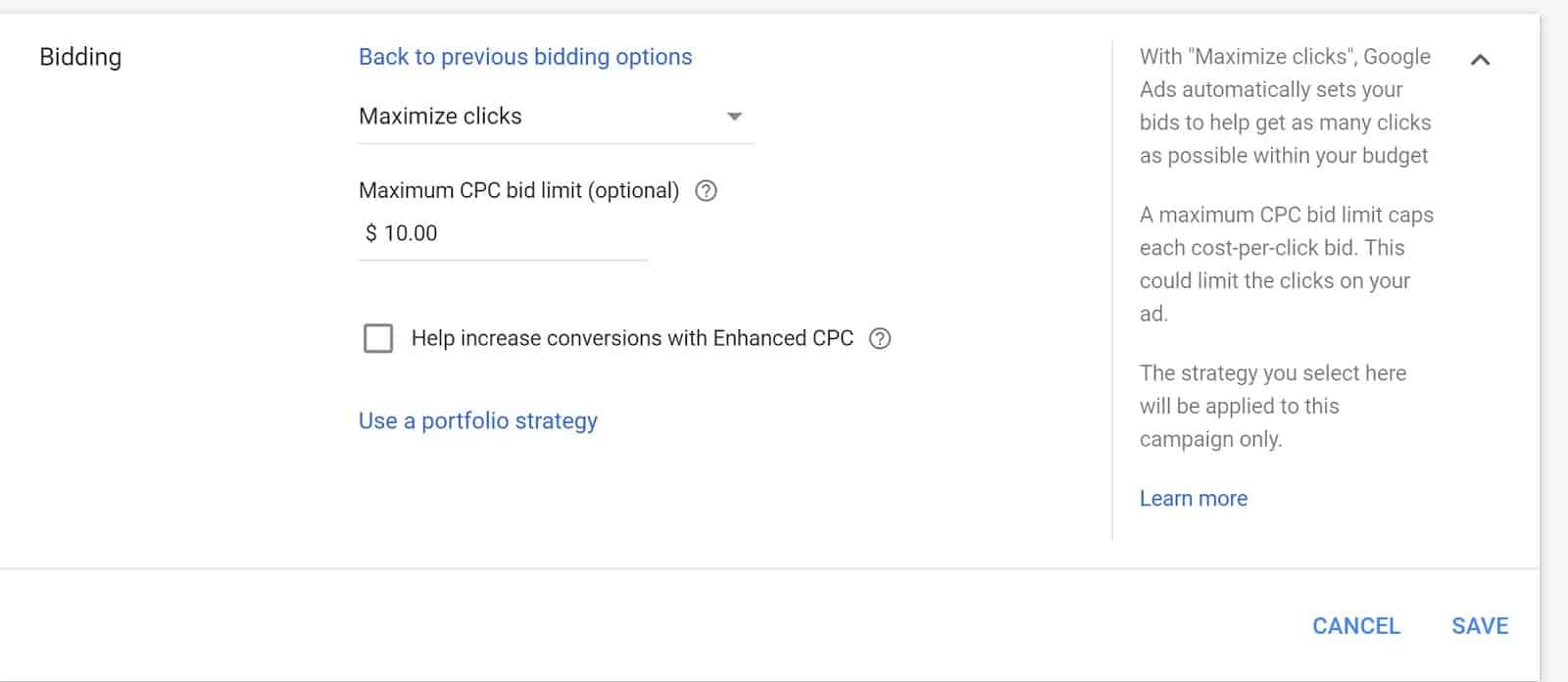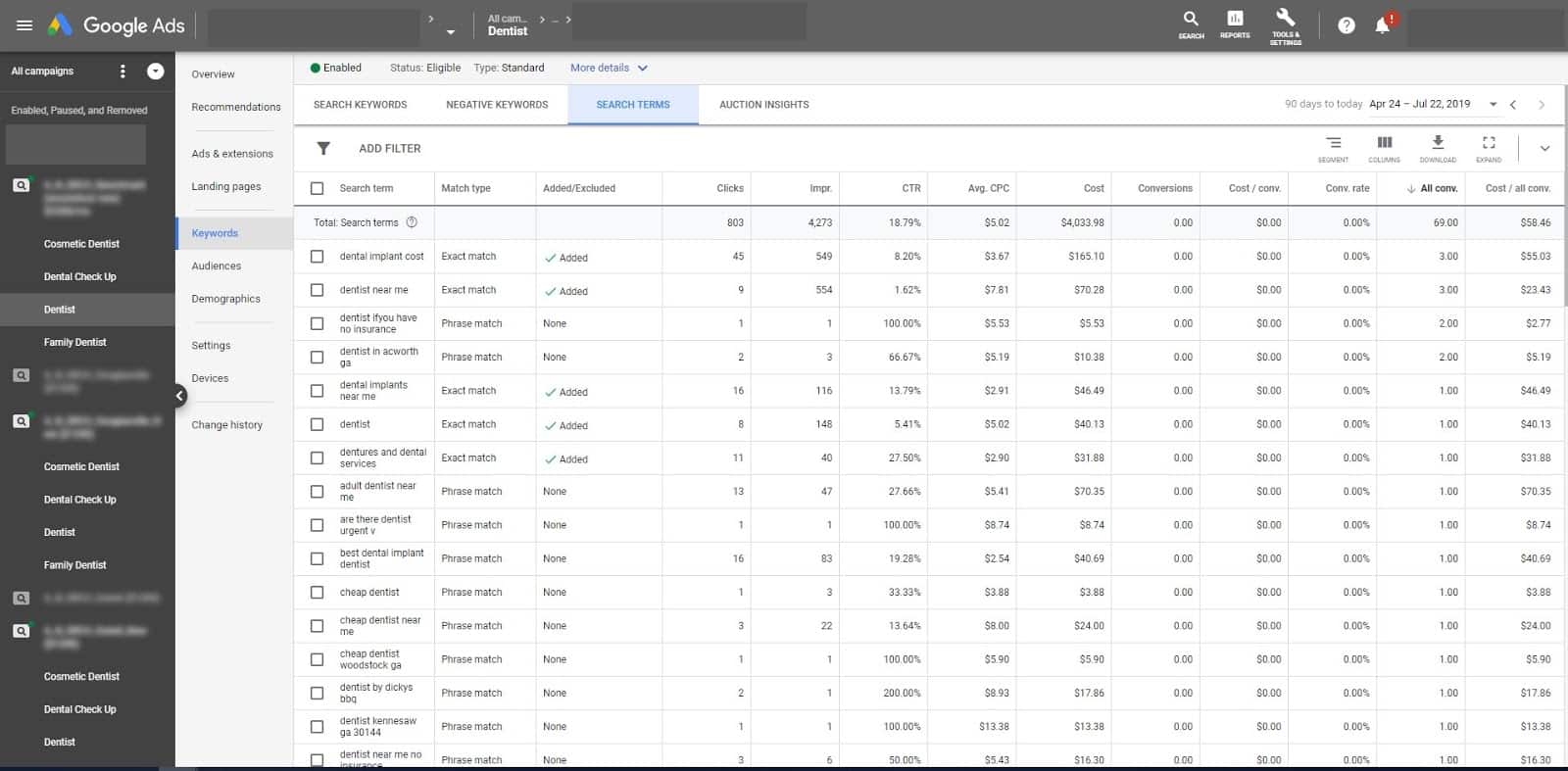Discover how Google Shopping Ads can effectively display your products to the right audience. This guide simplifies the setup process, explains the cost-per-click system, and provides advanced tips for optimizing your campaigns to achieve better reach and higher conversion rates. Whether you’re new to e-commerce advertising or looking to refine your strategies, you’ll find comprehensive information to succeed with Google Shopping Ads.
The most important thing in this guide:
Google Shopping Ads are an effective marketing tool that integrate with Google Merchant Center, appear in search results, and have a CPC cost structure.
Creating successful Google Shopping campaigns involves choosing the right campaign type, organizing products into ad groups, and refining bid strategy for impact.
Optimizing product feeds is crucial for better ad performance. Make sure to include correct product IDs, descriptive titles, and detailed descriptions to improve your ads.
Table of Contents
What are Google Shopping Ads and how do they work
Google Shopping Ads are a powerful tool for businesses, providing a dynamic marketplace where your products can attract the attention of potential customers right in their search results. These ads stand out with their visually engaging format that displays product images, prices, and retailer details, making them a game-changer for increasing online visibility and driving sales.
Implementing a well-structured Google Shopping Ads campaign is key to leveraging their full potential. These ads are active invitations for shoppers to explore and purchase your products.
Understanding the mechanics of Google Shopping Ads is essential for maximizing their effectiveness. Here’s how they work:
Your product data is managed through the Google Merchant Center, which feeds information directly into your ads.
These ads appear prominently in search results, providing high visibility and making it easy for users to find and compare products.
Google Shopping Ads operate on a cost-per-click (CPC) model, where you set a bid and a budget for your campaign. You pay only when someone clicks on your ad, making it a cost-effective way to drive targeted traffic.
What is the role of the Google Merchant Center in Google Shopping Ads
The Google Merchant Center is the foundation of your Google Shopping Ads, acting as the central hub for managing your product data feeds. It’s where you prepare and upload your product information to ensure it’s ready for online shoppers. By linking your Merchant Center account with your Google Ads account, you ensure that your product data stays up-to-date and is ready to match relevant search queries.
How Google Shopping Ads Appear in Search Results
When a customer’s search query matches your product, your Google Shopping Ad is triggered, appearing prominently above or beside the organic search results. This strategic placement enhances visibility and encourages clicks.
The carousel format allows customers to browse a variety of products, presenting a virtual shelf of options right at the top of the search results page. Google Shopping Ads are not limited to just Google Search; they also appear on Google Images and across a network of search partners, significantly expanding your reach and increasing the likelihood of attracting potential buyers.
How does the cost structure of Google Shopping Ads work
The cost-effectiveness of Google Shopping Ads stems from their cost-per-click (CPC) bidding system, where you only pay when someone clicks on your ad. With an average CPC of around $0.66, you can estimate the cost of engaging potential customers. This system is flexible, offering both paid and free listing options, allowing for better control over your advertising budget.
How is an effective Google Shopping campaign crafted
Creating an engaging shopping ads campaign involves several steps:
- Set Up a Google Merchant Center Account. Ensure your product data is accurate and up-to-date, including product titles, descriptions, images, and pricing. Link your Merchant Center to Google Ads for seamless integration.
- Create a Google Ads account.
- Select the Right Campaign Type. Choose the “Shopping” campaign type and decide between Standard or Smart Shopping campaigns, depending on your business goals and desired level of control over the campaign settings.
- Use product attributes such as brand, category, and custom labels to organize your inventory into ad groups.
- Implement a CPC bidding strategy that aligns with your budget and ROI goals. Consider using enhanced CPC or maximize conversion strategies to improve bid efficiency and campaign performance.
- Adjust campaign settings such as geographic targeting, device preferences, and daily budgets.
- Regularly review campaign performance, analyzing metrics like click-through rate (CTR), conversion rate, and return on ad spend (ROAS).
How is the right campaign type selected for a Google Shopping campaign
Choosing between Standard Shopping campaigns and Performance Max campaigns is crucial for aligning your advertising strategy with your business objectives.
- Standard Shopping Campaigns provide detailed control and customization over your ads. They allow for specific bids and budget allocations for different products or product groups. One of the key benefits is detailed reporting, which offers comprehensive metrics across various dimensions such as product ID, brand, and category. These campaigns are well-suited for businesses that want to tailor their ads to specific keywords and search queries, thereby maximizing relevance and conversion potential. However, they require regular manual adjustments and optimizations to maintain and enhance performance, demanding a more hands-on approach.
- On the other hand, Performance Max Campaigns focus on automation and broad reach. These campaigns leverage Google’s machine learning to automate ad placements across Google’s entire network, including Search, YouTube, Display, Discover, and Gmail. Performance Max campaigns combine various ad formats and platforms into a single campaign, allowing for a unified strategy that maximizes exposure and efficiency across Google’s ecosystem. This type of campaign is ideal for businesses looking for a more hands-off approach, as it simplifies management by automatically adjusting bids and placements to optimize for conversions.
In summary, Standard Shopping campaigns are best for detailed control and product-specific targeting, requiring more manual intervention but offering tailored precision. Performance Max campaigns offer a broader, automated reach, simplifying management while integrating multiple channels and ad formats.
Your choice will significantly impact how effectively your products capture attention on Google Shopping, so consider your needs and resources carefully.
How are products organized within ad groups in Google Shopping campaigns
Organizing products into ad groups in your campaign is like creating focused collections within your catalog. By grouping products based on attributes like brand, product type, or price range, you can target specific customer segments more effectively. This allows you to adjust bids and ad messaging to fit the interests of each group.
For example:
- Separating high-value items from cheaper ones helps you tailor your bids and ad spend for better returns.
- Grouping by brand lets you highlight key features and adjust bids based on demand.
- Using product conditions or custom labels, like “best sellers,” can further refine your targeting.
A well-organized ad group structure ensures that your products are matched with relevant searches and customer needs.
How is a bid strategy adjusted for maximum impact in a Google Shopping campaign
Mastering bid strategy is essential for optimizing the performance of your Google Shopping campaigns. The choice between manual and automated bidding strategies will significantly impact your campaign’s effectiveness.
For those new to Google Shopping, starting with manual cost-per-click (CPC) bidding allows for complete control over your bid amounts. This approach enables you to set specific bids for individual products or product groups based on performance metrics, such as conversion rates and profit margins. You can gradually increase or decrease bids based on the observed return on investment (ROI), allowing for fine-tuned control over your advertising spend.
As you gain more experience, transitioning to automated bidding strategies can help optimize bids in real-time using Google’s machine learning algorithms. Automated strategies, such as Target ROAS (Return on Ad Spend) or Maximize Clicks, adjust your bids dynamically based on historical data and predictive analytics to achieve your specific campaign goals. These strategies consider factors such as user behavior, device type, and time of day to optimize bids for maximum impact. For example:
- Target ROAS aims to maximize revenue by setting bids that achieve a specific return on ad spend.
- While Maximize Clicks focuses on driving as much traffic as possible within your budget.
It’s crucial to align your bid strategy with your product margins and overall business goals. For products with higher margins, you might allocate a larger budget and set higher bids to capture more competitive search queries. Conversely, for lower-margin items, keeping bids lower ensures that your ad spend remains profitable.
How are product feeds optimized for peak performance in Google Shopping Ads
Your product feed is the digital blueprint for your Google Shopping Ads, containing all the crucial information that determines how your products appear to shoppers. It’s essential to keep this feed accurate, compliant with Google’s guidelines, and optimized for the best performance.
For beginners, this task might seem challenging, but getting it right is critical. A well-maintained product feed sets a strong foundation for your ads to perform well and reach your target audience effectively.
What are the essential elements of a product feed for Google Shopping Ads
A product feed missing essential elements is like a map without landmarks—it leads nowhere. Ensure your feed includes unique product identifiers (such as GTIN or MPN), accurate product titles, and detailed descriptions that match customer search queries.
Key elements like product categories, availability, and pricing are crucial for Google to effectively match your products to potential buyers. Accuracy in these details is vital, as they determine how well your products perform in search results. Think of your product feed as a clear and concise billboard that can significantly impact your campaign’s success.
Regular updates ensure your pricing and availability are accurate, helping you stay competitive in Google Shopping searches. Staying compliant with Google’s policies keeps your products visible in search results. Using tools like Shopping Feed Audits helps you spot and fix any errors quickly and efficiently.
Search Scientists
We live, breathe & Dream Paid Traffic
How can high-quality product images enhance visibility in Google Shopping Ads
Never underestimate the power of good visuals. High-quality product images can boost your ad’s click-through rates by catching the shopper’s attention and encouraging them to click. Clear, well-lit images that showcase your product’s best features help avoid being sidelined by Google for poor visuals.
Pair these images with SEO-friendly product titles and descriptions to make your listings stand out in the crowded digital market.
What are some advanced tactics to supercharge your Google Shopping Ads
Having mastered the basics, it’s time to take your Google Shopping Ads to the next level with advanced strategies that can dramatically enhance your campaign performance. Harnessing the power of negative keywords and customizing product titles for precise search query alignment are just a few of the techniques that can drive your success.
How are negative keywords implemented in Google Shopping campaigns
Negative keywords are terms or phrases that you want to exclude from triggering your ads. They help prevent your ads from appearing for irrelevant search queries, thus saving on ad spend and improving campaign efficiency.
To use negative keywords in Google Shopping Ads, start by analyzing your Search Terms Report to identify queries that do not lead to conversions or are not relevant to your business. Add these terms to your list of negative keywords in your campaign settings to ensure that your ads do not show up for searches containing these words. Choose the appropriate match type—broad, phrase, or exact—for your negative keywords to control which search queries are excluded.
Regularly update your list of negative keywords to adapt to changes in user behavior and market trends, ensuring that your budget is focused on the most relevant search queries and maximizing the effectiveness of your advertising campaign.
How can insights from the Search Terms Report be leveraged in Google Shopping Ads
The Search Terms Report provides valuable insights into which keywords are driving traffic to your ads and which ones are irrelevant. By analyzing this report, you can identify keywords that are performing well and should be targeted more, as well as keywords that are not relevant and should be added as negative keywords.
How is landing page optimization used to convert clicks into sales
The real test of your Google Shopping Ads is their ability to turn clicks into sales. Landing page optimization is key to this process. By creating engaging product pages and making the checkout process smooth and quick, you can keep potential buyers interested and lead them to complete their purchase.
Using A/B testing allows you to experiment with different elements of your landing page to see what works best, helping you continually improve and boost your sales conversions.
How are compelling product listings crafted for better sales
Your product listing is like your digital storefront. To create compelling listings, write clear and engaging descriptions that highlight key features and benefits, use urgency (e.g., “limited stock”) to encourage quick action, and include shipping details to set clear expectations. Adding customer reviews can build trust and increase the likelihood of purchases. Every detail matters in converting interest into sales.
How is the checkout process streamlined to increase conversions
To streamline the checkout process, ensure your interface is simple and user-friendly. Offering multiple payment options, like credit cards, PayPal, and digital wallets, can increase convenience. Displaying security badges prominently can help build trust, which is critical as 17% of users abandon carts due to security concerns.
Including a guest checkout option is essential; studies show that 28% of users abandon their carts if forced to create an account.
Real-time form validation can reduce errors and prevent frustration, with research indicating that 18% of customers abandon their carts due to a long and complicated checkout process.
This makes it easier for customers to complete their purchases, ultimately boosting your conversion rates.
How does A/B testing contribute to continuous improvement in Google Shopping Ads
A/B testing is essential for refining your Google Shopping Ads.
This process involves comparing two versions (A and B) of an element to see which performs better. For instance, you might test a product title that emphasizes price against one that highlights features. The insights gained from these tests allow you to make data-driven decisions, optimizing your ad content and landing pages to better resonate with your target audience.
How is success measured with Google Shopping Ads
Assessing the success of your Google Shopping Ads involves looking at several key metrics:
- Click-Through Rate (CTR): Shows how often people click on your ad. A higher CTR means your ad is interesting to your audience.
- Cost Per Click (CPC): Tells you how much you’re paying for each click. Keeping this low helps you get more value for your money.
- Conversion Rate: Measures how many clicks turn into purchases. A higher rate means more people are buying after clicking your ad.
- Return on Investment (ROI): Compares the money you earn from your ads to what you spend on them. A higher ROI means your ads are profitable.
These metrics help you understand how well your ads are performing and guide you in improving your campaign for better results.
What is the Search Impression Share metric and why is it important
The Search Impression Share metric measures the visibility of your ads in comparison to the total number of opportunities they had to appear. This key performance indicator (KPI) tells you the percentage of impressions your ads received relative to the total available impressions for the relevant keywords.
A high impression share indicates that your ads are being displayed frequently and effectively reaching your target audience, while a low impression share suggests that your ads are not fully capitalizing on available opportunities and may be overshadowed by competitors.
How are campaigns adjusted based on performance data
Being able to adjust campaigns based on performance data can significantly improve results. It involves responding to data insights, such as increasing bids for high-performing products or pausing those that aren’t doing well.
By interpreting metrics like ROI and CTR, you can make informed decisions to:
- Optimize campaigns for better efficiency and profitability
- Ensure campaigns keep up with market trends and consumer behaviors
- Maximize conversions and increase profits
Continuous optimization helps your campaigns stay effective and competitive.
Summary
As we wrap up our guide on Google Shopping Ads, remember that maximizing profits requires strategic planning, continuous optimization, and data-driven decisions. From understanding the basics to creating campaigns, optimizing product feeds, and refining landing pages, each step is crucial.
Frequently Asked Questions
How often should I update my Google Shopping Ads product feed?
You should update your Google Shopping Ads product feed regularly to keep the information current and accurate, ensuring a competitive edge and compliance with Google’s policies.
Can I use Google Shopping Ads without a Google Merchant Center account?
No, a Google Merchant Center account is necessary to manage product data and link it to Google Shopping Ads campaigns.
What is the average cost-per-click for Google Shopping Ads?
The average cost-per-click for Google Shopping Ads is around $0.66, but it can vary depending on factors like product category and competition.
How can I tell if my Google Shopping Ads are successful?
You can tell if your Google Shopping Ads are successful by analyzing key performance indicators such as click-through rate (CTR), conversion rate, return on ad spend (ROAS), and overall revenue generated from the ads. Look at these metrics to assess the effectiveness of your ads.
Is it better to use manual or automated bidding for Google Shopping Ads?
Both manual and automated bidding strategies have their advantages. Manual bidding provides more control while automated bidding uses algorithms to optimize bids for your goals. Consider starting with manual bidding to gain insights before transitioning to automated bidding strategies.

Technical SEO: A Complete Guide to Optimizing Your Website for Search Engines








